Who Made Me ME?
Aah, yes! The age-old question: Who am I? Every genealogist, family researcher, historian seeks the truth to this question. Mankind has always sought after the source of Being. Perhaps DNA technology can now furnish the best and most accurate answer yet.
Ancestry recently updated their ethnicity estimates and included a big surprise in their announcement. Not only did they fine-tune the ethnicity percentages for their subscribers, they also unveiled a new and exciting technological advancement. They have now been able to identify which segments of ethnicity results derive from each of your parents even without those parents having submitted their DNA. Sadly, both my parents are deceased and never submitted DNA for testing. Therefore, I welcome this amazing advancement. Ancestry calls this new technology SideView. I will attempt to explain how this works.
Because Ancestry has the largest database of DNA sampling,
their scientists have been able to identify regional similarities among
their vast array of submitted DNA. After identifying similarities in DNA
segments matched to folks with deep historical habitation of specific
areas, they are able to label those populations. They have used the
knowledge of anthropologists in order to label their reference samples
with geographic areas based upon known migration patterns and original
habitats of ancient peoples.
First of all, Ancestry examines some 700,000 segments of
your DNA sample. Their scientists compare each of 1,001 segments of your
DNA against selected reference samples obtained from around the world.
Computer algorithms enable them to match segments of your DNA to the
reference samples your results most resemble. Thus, each segment is
labeled with the geographic region matched. The overall count of segment
matches is then added up by region. (For example, my personal results
reflect the predominant ethnic or regional source is from Scotland,
reflected from matches to both my patriarchal and maternal lines.) The
results are then shown as a percentage displayed in your updated
ethnicity estimates.
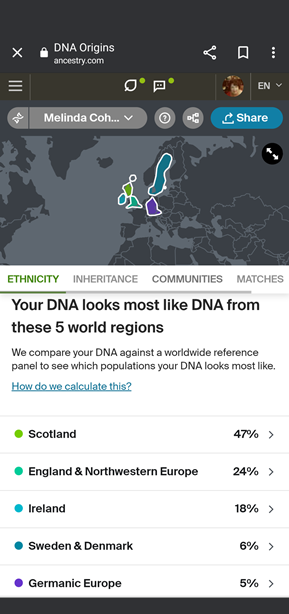
|
|
SideView analyzes strings of DNA letters against your DNA
Matches. All DNA is based upon pairings of the basic building blocks of A
(Adenine), C (Cytosine), G (Guanine), and T (Thymine). Thymine always
pairs with Adenine and Cytosine always pairs with Guanine. Each rung on
the helical structure contains two building blocks, one of these from
your mother and one from your father. The inherited strings of genetic
coding are compared against your DNA Matches. When identical strings are
identified on one side of the rung (for instance C, T, G, A), the
opposing letters can be attributed to the other parent.
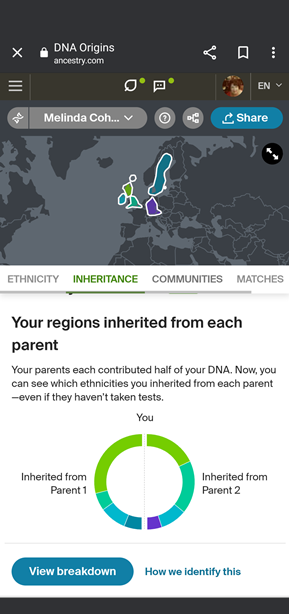
|
|
Identifying Parent 1 and Parent 2 as either Mother or Father is a
bit trickier. A good strategy is to locate an ethnic region in your
estimate that is unique to either Parent 1 or 2. In my estimate each
Parent shows a unique region. Parent 1 shows Sweden & Denmark while
Parent 2 shows to have contributed Germanic Europe.
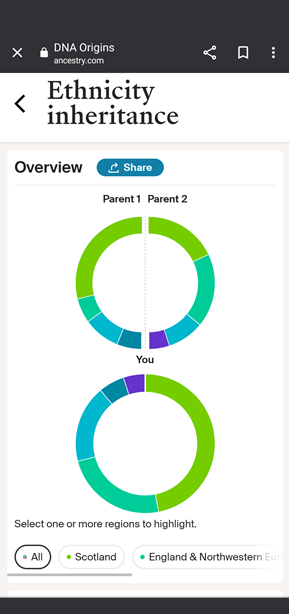
|
|
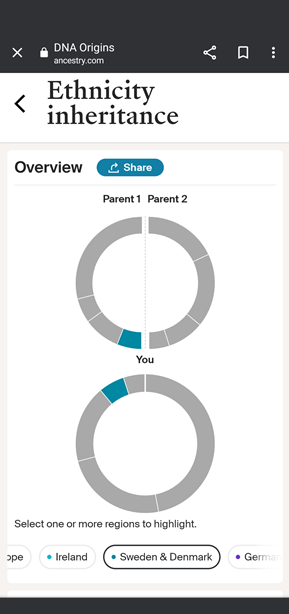
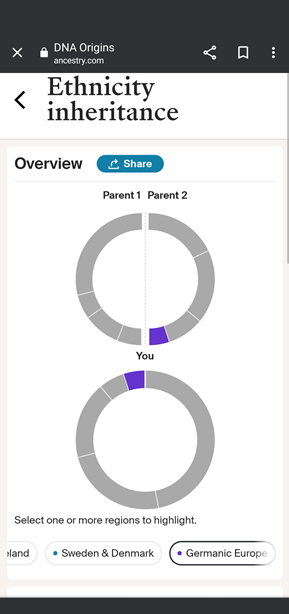 |
Immediately, my assumption is that my father will have been
the contributor identified as Parent 2 since his line includes Baron Von
Hempleman, Killian Creek (original German name Guillaume Grieg), Peter
Copple, and numerous other German ancestors. My surmise then, is that my
mother's ancestors include some who hailed from Sweden or Denmark. An
excellent candidate would be her Hopper line: known for ice blue eyes,
fair complexions and extremely light hair. However, it is quite possible
those assumptions might be in error.
Since we only inherit one-half each parent's DNA, it is quite
possible an entire genetic ethnicity for one (or both) could be a
segment NOT passed down to me. Thus, it would be preferable to have a
sibling's DNA with an ethnic breakdown with which to compare. In the
absence of such a serendipitous happenstance, it would behoove us to
compare the ethnic estimates for our known relative DNA Matches. A
preponderance of those close cousins reflecting either the Sweden &
Denmark or Germanic Europe ethnicity could help identify the parental
donor.
Ancestry provides the best explanation of how they divide
the DNA ethnicity estimates by Parent 1 and Parent 2. Here is their
graphic illustration to help us understand the process.
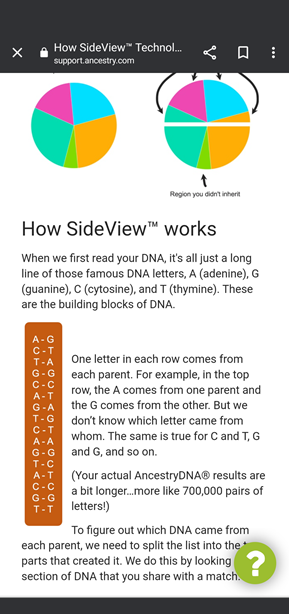
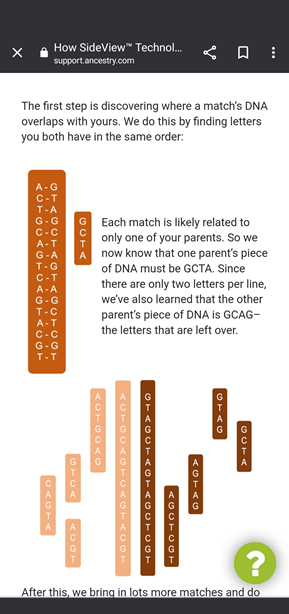 |
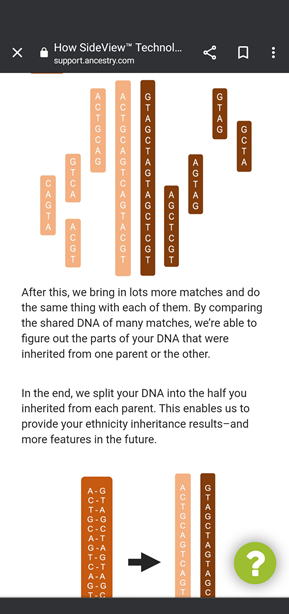
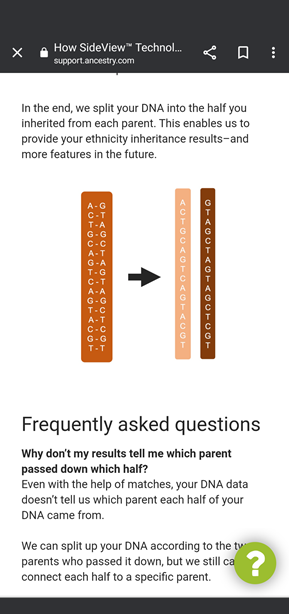 |
This is a remarkable advancement in analysis of our DNA. I,
for one, look forward to every new announcement. Clearly, however, DNA
is not the whole story. Even in this almost unbelievable capability, we
find our DOCUMENTED research is essential. Without that background,
comparisons would be devoid of geographic or historic placement. Never a
devotee of military history prior to in-depth exploration of my own
ancestors' struggles to carve out this glorious country, I now hunger to
find the facts that illustrate for me what those men and women actually
faced and overcame. Similarly, this ability to place my ancestors in a
PLACE and TIME is thrilling. It truly brings them to life!
May this amazing technological advancement trigger you to further explore your Armchair Genealogy! Good digging, explorers.






No comments:
Post a Comment